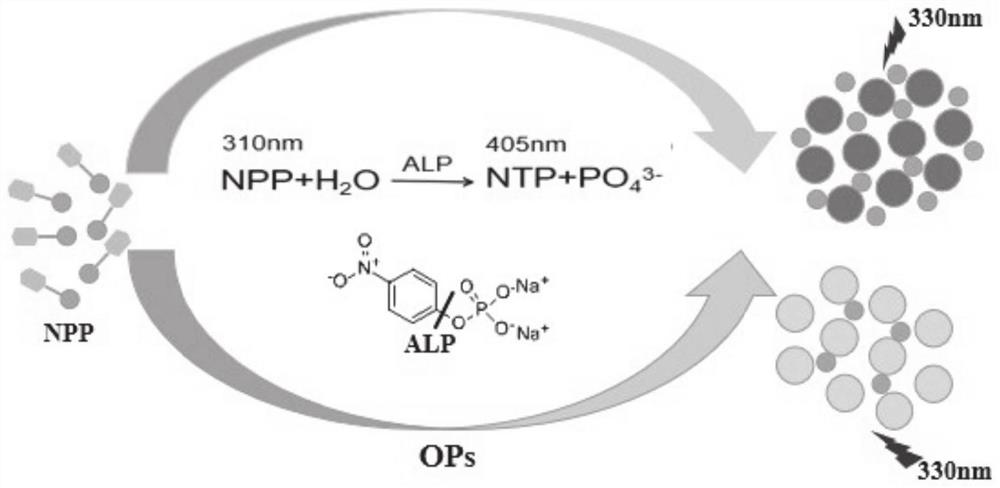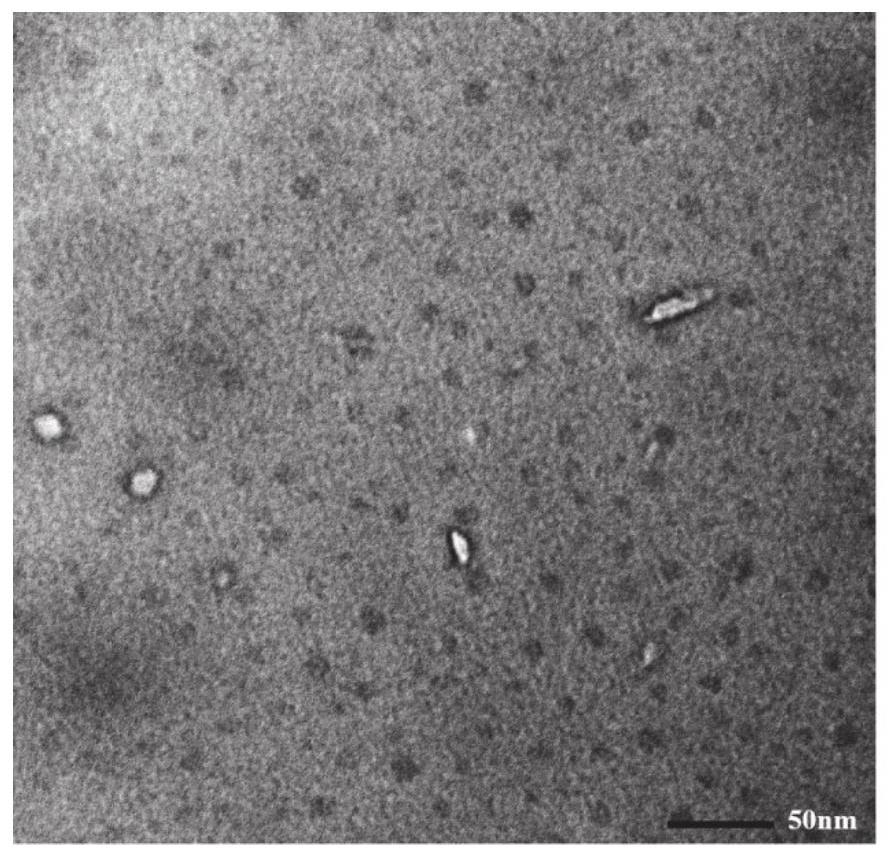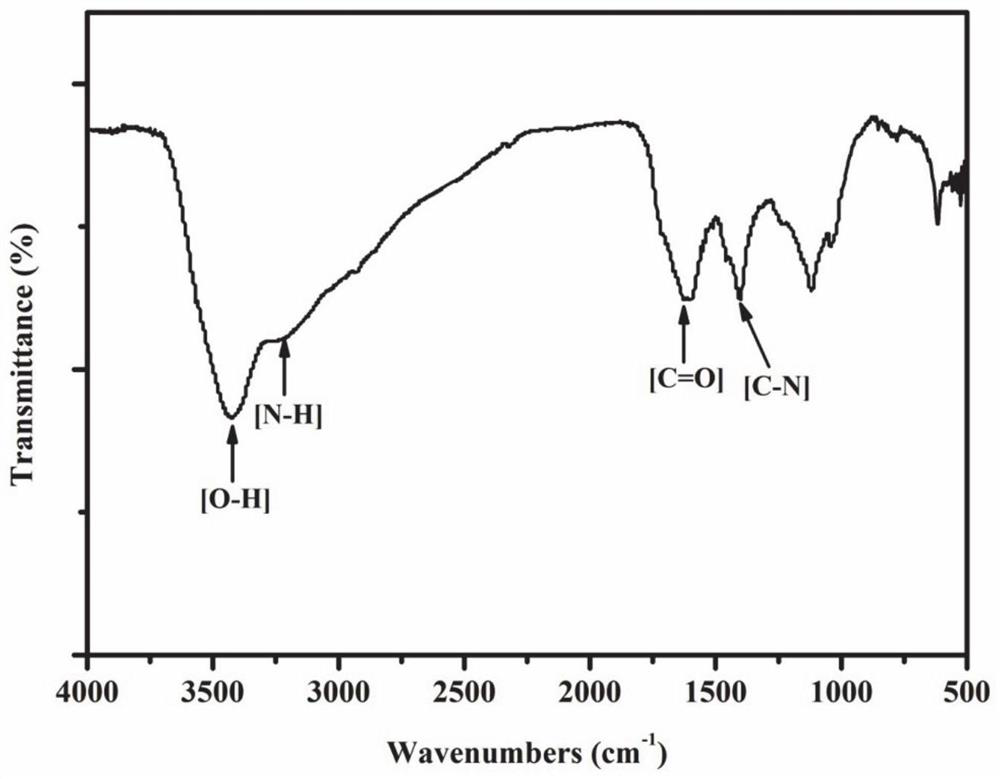Application of cellulose-based carbon quantum dot preparation in organophosphorus pesticide detection
An organophosphorus pesticide and carbon quantum-based technology, applied in the field of fluorescent probes, can solve problems such as unresearched carbon quantum dots, and achieve the effects of universality, low cost and simple operation method.
- Summary
- Abstract
- Description
- Claims
- Application Information
AI Technical Summary
Problems solved by technology
Method used
Image
Examples
Embodiment 1
[0046] Example 1 Preparation of fluorescent carbon quantum dots
[0047] The preparation method is as follows:
[0048] 0.5 g of microcrystalline cellulose and 0.5 g of aspartic acid were placed in a mortar, repeatedly ground and mixed well. Add 35 ml of ultra-pure water to the beaker, stirred and ultrasonically 30min, and the sufficiently dispersed solution was transferred to the polytetrafluoroethylene liner of the high-pressure water heating reaction kettle, and the oven was preheated to 190 ° C, and the reaction was 12 h. After the reaction, the reaction cooled to room temperature, and the solution was taken out again to treat 30 min and taking the supernatant, the resulting water dispersion solution was centrifuged at 7000 rpm for 30 min After centrifugation by 0.22 μm filtration. A carbon quantum point of blue fluorescence can be obtained by dialysis in a dialysis bag having a molecular interception of 1000. Finally, the dialysis solution was placed in a cryogenic dryer for ...
Embodiment 2
[0049] Example 2 Two-phase structural fluorescent microgel TEM
[0050] The carbon quantum dot solution produced in Example 1 was added dropwise on the copper net, which was placed in a constant temperature incubator for 12 h. TEM map to shoot figure 2 As shown, the carbon quantum dot distribution is uniform, and the average size is 10 nm. image 3 Infrared spectrum for the prepared carbon dot, such as image 3 Down, 3200cm -1 The wide suction peak corresponds to the bending vibration of N-H. C = O stretch vibration, corresponding 1671cm -1 Strong peak; due to C-N telescopic vibration, will be at 1375cm -1 A peak appears. Indicates that carbon quantum dots indicate link -NH 2 And the functional group such as -COOH.
[0051] Ultraviolet absorption spectrum for NPP ( Figure 4 ) Conduct analysis, and its absorption peak is at 312 nm.
[0052] The carbon dots synthesized in Example 1 were fluorescence measured to obtain a carbon dot fluorescence excitation, emission map, and compared to...
Embodiment 3
[0053] Example 3 Sensitivity detection of fluorescent carbon quantum dots on killing phosphorus
[0054] During this test, four control groups were set. The first group was dissolved in 2 ml ultrapure water at a concentration of 1 mg / ml in Example 1 in Example 1; the second group, taking 10 in advance 10 -3 Mol / L of NPP solution 200 μL and 2 mg of carbon dot powder is dissolved in 1.8 mL of ultrapure water; group three, alkaline phosphatase is diluted with PBS buffer (0.1 mol / L) on the ultra-clean station, add In the same solution as the group, 37 ° C water bath was cultured for 30 min, of which the concentration of Alp was 3 U / mL; the operation step of the fourth group was similar to the third group, and the difference is that 1 μL 1 mg / ml of the solution is added to the solution before adding ALP. The sulfur sulfur phosphorus standard solution was added 37 ° C for 30 min after adding Alp. Finally, the four groups of solutions were analyzed at 330 nm excitation waveleng...
PUM
 Login to View More
Login to View More Abstract
Description
Claims
Application Information
 Login to View More
Login to View More - R&D
- Intellectual Property
- Life Sciences
- Materials
- Tech Scout
- Unparalleled Data Quality
- Higher Quality Content
- 60% Fewer Hallucinations
Browse by: Latest US Patents, China's latest patents, Technical Efficacy Thesaurus, Application Domain, Technology Topic, Popular Technical Reports.
© 2025 PatSnap. All rights reserved.Legal|Privacy policy|Modern Slavery Act Transparency Statement|Sitemap|About US| Contact US: help@patsnap.com



